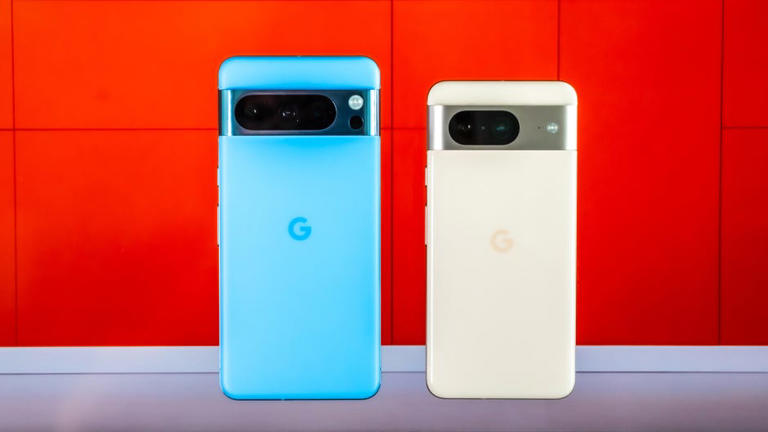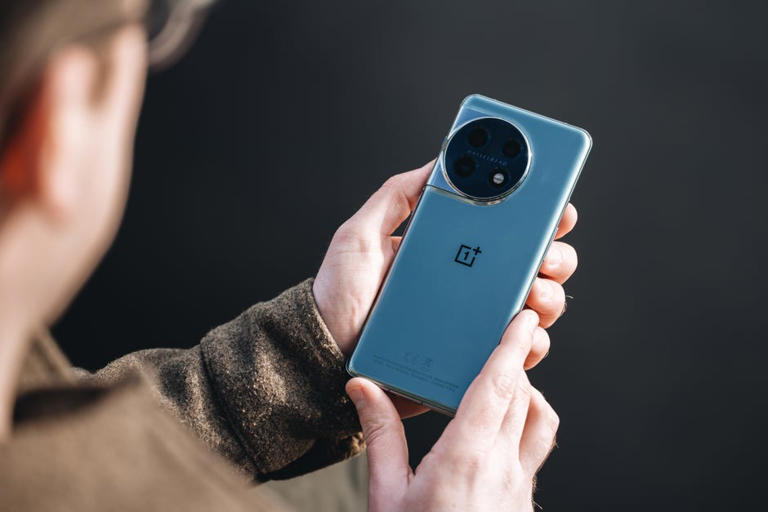In the potential developments anticipated for 2024, your phone might undergo a significant transformation, transcending the routine updates in camera quality and processors that have characterized mobile devices in the past decade. Anticipate new AI-driven functionalities that could elevate phones to function more like adept personal assistants, shifting their role from mere gateways to the internet. Moreover, foldable phones are on the verge of a breakthrough, thanks to innovative design enhancements that solidify their position in the smartphone market. These forthcoming changes might make your next phone feel more like an advanced device rather than a conventional rectangular piece crafted from glass and metal.
According to Peter Jarich, head of mobile industry research firm GSMA Intelligence, the essence of this novelty is crucial, with folding form factors being a pivotal aspect. AI and foldable screens mark significant directions for the future of smartphones. Simultaneously, noticeable advancements are occurring in realms directly impacting current phone usage patterns. Accelerated charging speeds reduce the time needed for recharging, while tech companies are striving for increased sustainability in their products, potentially extending your phone’s lifespan. This could not only benefit the environment but also offer financial advantages to users.
These stimulating advancements are much needed in an industry that has seen a decline in recent times. In 2022, due to low demand and economic hurdles, the smartphone market experienced its lowest shipment figures since 2013, as reported by the International Data Corporation. Notably, data from various sources indicates that users are holding onto their phones for longer periods, potentially indicating the significant improvements witnessed in phones over the past decade.
Aaron West, senior analyst for market research firm Omdia, noted that people struggled to discern the value in upgrading when their two-year-old phone seemed nearly identical to newer models. With smartphones becoming commonplace and more functional than novel, it takes substantial advancements to capture audience attention. This trend shifted in 2023, signaling a renewed interest in smartphones, as indicated by recent data from the IDC suggesting an uptick in smartphone shipments toward the end of the year.
The year 2024 will bring AI to your phone

Artificial intelligence has long played a role in smartphones, particularly in features like facial recognition, language translation, and photography. However, the advent of generative AI, akin to ChatGPT technology, introduces capabilities that extend beyond basic functions such as unlocking the phone or enhancing photo backgrounds. Instead of working in the background, generative AI-powered features actively engage users in more proactive ways.
Generative AI is poised to redefine the smartphone experience. For instance, Google’s Pixel 8 lineup unveiled in October showcased AI-driven photo editing capabilities, allowing tasks such as altering facial expressions or creating custom wallpapers from scratch based on specific themes. Google Assistant, too, receives an upgrade incorporating generative AI, known as Google Assistant with Bard. This enhanced virtual assistant can summarize important email points and craft social media captions for photos, promising a more proactive and personalized experience.

Qualcomm, the creator of chips powering phones by companies like Samsung and OnePlus, has designed its latest mobile processor around generative AI. Devices such as the Xiaomi 14 and 14 Pro, flagship models from the world’s third-largest phone manufacturer, are among the first to adopt Qualcomm’s Snapdragon 8 Gen 3 chip. The new chip brings forth innovative features, including the ability to enhance images post-capture and extract key points from phone calls to create summaries, demonstrating the transformative potential of generative AI in mobile devices.
Samsung’s anticipated announcement of the Galaxy S24 on January 17 might offer further insights into how AI will shape the future of smartphones. Apple, too, is expected to introduce new AI features in its upcoming iPhone update, likely arriving in September, according to Bloomberg. If generative AI fulfils its potential, phones could evolve into intelligent personal assistants anticipating user needs before they are even articulated.
Foldable Phones on the Verge of a Breakthrough
The evolution of smartphones isn’t limited to technological advancements; it extends to their physical forms. Foldable phones, introduced since 2019, have been gradually gaining traction, and 2023 marked a pivotal year in their development. Companies such as Samsung, Google, Motorola, and OnePlus made significant strides in popularizing foldable phones in the US, diversifying consumer choices in this segment.

Previously dominated by Samsung, the foldable phone market now witnesses the participation of nearly every major smartphone maker. Google and OnePlus entered this space in 2023, effectively doubling the options available to consumers compared to 2022. Furthermore, the quality of foldable phones improved, particularly in the case of flip phones. Devices like the Motorola Razr Plus and Samsung Galaxy Z Flip 5 now boast larger external screens, enhancing usability even when the phone is closed. These advancements highlight the potential of foldable phones with dual screens serving distinct purposes, offering a more compelling proposition beyond mere folding capability.
Despite these strides, the high prices of foldable phones remain a significant obstacle to wider adoption. Models like the Galaxy Z Flip 5 and Motorola Razr Plus typically come with price tags around $1,000 in the US. However, in a bid to increase accessibility, Motorola introduced a cheaper Razr priced at $700, aligning its cost with non-folding smartphones. The potential for foldable phones to become more affordable hints at a future where they could become a mainstream choice for consumers.
Projections suggest a burgeoning popularity for foldable phones in the coming years, with Counterpoint Research forecasting shipments to surpass 100 million units by 2027, compared to an estimated 20 million units in 2023 reported by the IDC. This growth trajectory occurs amidst a shrinking overall smartphone market, signifying the unique appeal foldables offer to consumers seeking novel experiences.
Phones that are faster to charge and last longer

Amidst these technological advancements, the practical aspects of smartphone usage, such as battery life, remain crucial. While improvements in battery technology were limited in 2023, some smartphone manufacturers focused on accelerating charging speeds. Devices like the Xiaomi 14, OnePlus 11, and Lenovo ThinkPhone showcased advancements in charging capabilities, offering faster and more efficient charging options. Combined with energy-efficient chips, these developments mitigated concerns about stagnant battery technology, indicating progress in different facets of smartphone functionality.
Moreover, initiatives in enhancing repairability and sustainability gained momentum in 2023. Both Apple and Samsung expanded their self-repair programs, making repairs more accessible even for users who might not possess technical expertise. Samsung’s inclusion of its latest foldable phones in the self-repair program demonstrates a commitment to sustainability and user convenience. Amsterdam-based company Fairphone introduced a new phone focusing on repairability and sustainably sourced materials, setting a higher standard for long-lasting devices. Google extended software support for its Pixel phones, showcasing a commitment to prolonged device lifespan through extended software updates.
Looking Ahead
The anticipated changes, driven by generative AI, foldable screens, enhanced battery technologies, and sustainability initiatives, mark a significant departure from the conventional evolution of smartphones. These advancements signify a shift in the smartphone landscape, aiming to redefine the user experience beyond mere hardware upgrades or incremental improvements.
As the tech world eagerly awaits these developments, one thing is evident: smartphone manufacturers are exploring diverse avenues to propel the smartphone experience forward, aiming to exceed expectations and transform these devices into indispensable companions, anticipating and fulfilling user needs seamlessly.